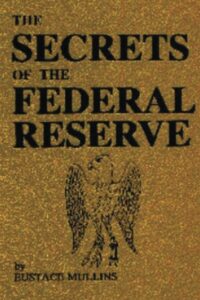The Federal Reserve, often shrouded in complexity, operates as the fulcrum of the U.S. financial system.
This detailed explanation unveils the intricate mechanisms wielded by Federal Reserve Banks in controlling member banks.
Through stringent reserve requirements and strategic manipulations, this narrative offers an insightful peek into the Federal Reserve’s pivotal role in money creation, market control, and the profound impact these measures exert on the economy at large.

Federal Reserve Banks’ Control Mechanisms
Federal Reserve Banks wield significant control over member banks, operating through stringent deposit requirements.
These regulations dictate that local banks maintain specific reserves on the books of the Federal Reserve Bank, based on their total demand and time deposits.
For instance, a bank holding $1,000,000 in demand deposits must secure a minimum $130,000 deposit with the Federal Reserve Bank.
In tandem, if a bank holds $500,000 in time deposits, an additional $15,000 minimum deposit is mandated. This total deposit of $145,000 held by the member bank within the Federal Reserve Bank is termed its reserves.
The requirement stipulates a minimum of 13% of total demand deposits and 3% of time deposits for larger city banks.
In contrast, banks in smaller cities must maintain 7% of their total demand deposits with the Federal Reserve Banks.
Moreover, each Federal Reserve Bank is mandated to possess a fractional amount of gold or gold certificates in relation to the aggregate deposits of its member banks.
Formerly, before the enactment of the Banking Act of 1933, each Federal Reserve Bank was obliged to maintain 35% of the reserves of local banks in gold.
To illustrate, considering the earlier mentioned member bank with a $145,000 deposit, it was mandated to possess 35% of this amount in gold, which equated to approximately $51,000.
This sum of $51,000 served as the gold base for the creation of bank-deposit money amounting to $1,500,000.

The Illusion of the Gold Standard
The gold standard, celebrated as conservative and sacred, holds a facade easily shattered by the slightest deviation.
A minute reduction in the gold base triggers a domino effect, leading to a collapse akin to a house of cards.
This stark reality unveils the purported authenticity of the gold standard as a sham and a fraudulent system.
To delve deeper into understanding the manipulative control over the money supply through altering the gold base, recommended readings include “Money Creators” by Gertrude M. Coogan and “The Bankers Conspiracy” by Arthur Kitson.
In essence, our monetary system’s existence hinges solely upon banks’ issuance of loans to individuals, corporations, or the government.
As member banks accumulate deposits, termed as credit money, through these loans, they’re mandated to maintain fractional amounts of these deposits, known as reserves, on the Federal Reserve Bank’s books.
Once a bank exhausts all permissible loans with its existing reserves, it has the option to leverage a businessperson’s note or a government bond.
This note or bond serves as collateral, allowing the bank to either directly sell it to the Federal Reserve Bank or secure a loan from the Federal Reserve Bank.

The Domino Effect of Rediscount Rates on Government Bonds
When a member bank sells a $10,000 note to the Federal Reserve Bank, it reimburses the member bank the note’s face value, deducting the interest for the unmatured period.
The interest rate charged by the Federal Reserve Bank to the member bank is termed the rediscount rate.
Altering this rate induces a fluctuation in the value of all government bonds within each member bank’s portfolio.
For instance, the deliberate increase of the rediscount rate from 3% to 9% in 1920 led to the orchestrated collapse of agricultural banks, subsequently affecting the rate at which the government sold new bonds to banks.
This direct correlation signifies that the existing rate on government bonds is intricately linked to the rediscount rate.
The market price of a government bond with a 3% coupon declines if the government issues higher-rate bonds. No rational investor would purchase a 3% bond at $100 when a 5% bond is available at the same price.
Consequently, the 3% bond would be sold below its face value of $100 to match the yield of the 5% bond.
This trend in bond pricing was evident in the depreciation of “Liberty” Bonds to 80 in 1920, detailed in pages 60 to 66 of “Money Creators,” unveiling a secret meeting among bankers aimed at impoverishing farmers.
The devaluation of Government Bonds triggers a corresponding decline in the market value of all bonds owned by local banks, subsequently reducing each member bank’s surplus.
A decrease in surplus necessitates a reduction in outstanding loans.
Consequently, a rise in the rediscount rate compels local bankers to recall loans, effectively eliminating existing money from circulation.

Open Market Operations: A Tool to Manipulate Bank Reserves
Open Market Operations represent a potent mechanism wielded by Federal Reserve Banks to diminish the reserves of local banks.
This discretionary power allows local banks to be coerced into purchasing outstanding government bond issues, whether directly from the Federal Reserve Bank or from the public (existing bonds held by individuals in their safety deposit boxes).
When engaging in such transactions, the local bank utilizes a portion of its reserves, held on the books of the Federal Reserve Bank, to procure these government bonds.
As a bank employs its reserves to acquire government bonds through Open Market Operations, it inevitably reduces the amount of its deposits (reserves) on the Federal Reserve Bank’s records.
This decrease in deposits directly translates into a reduction in reserves.
Consequently, as reserves diminish, the bank is compelled to call in loans, thus reducing its own deposits and subsequently decreasing the overall volume of money in circulation.
Issuance of Federal Reserve Notes: A Bookkeeping Process
When a member bank obtains Federal Reserve Notes from a Federal Reserve Bank, specific bookkeeping entries occur.
The Federal Reserve Bank initiates the process by debiting the Reserves of the member bank.
Simultaneously, the Federal Reserve Bank credits an account labeled Circulation for the precise value of the Federal Reserve Notes dispatched to the member bank.
The process of releasing Federal Reserve Notes to a member bank involves the Federal Reserve Bank’s Governor delivering these notes to the Federal Reserve Agent.
This figure, embodying each dollar’s worth of Federal Reserve Notes issued to a member bank, comprises 60% in government bonds and 40% in gold certificates.
Effectively, the total sum logged in the Circulation account of a Federal Reserve Bank must be balanced on the asset side of the Federal Reserve Bank’s financial statement, with 40% accounted for in gold certificates and 60% in government bonds.

Understanding “Cash and Due from Bankers” on a Local Bank’s Statement
The item labeled “Cash and Due from Bankers” on a local bank’s statement encompasses two components:
- A nominal sum of actual currency physically present in the bank.
- A significantly larger portion of bookkeeping funds owed to the bank, originating from either the Federal Reserve Bank or other banks.
The amalgamation of “Cash” and “Due from Banks” into a singular item on publicly accessible bank statements serves a specific purpose.
This consolidation veils the actual scarcity of real cash held by banks in relation to their professed deposits.
If this divergence were apparent to the public, it would reveal the inherent deceitfulness within the banking monetary system.

Unveiling the Mechanisms: How Federal Reserve Controls Impact Banking
The intricate mechanisms wielded by the Federal Reserve Banks to regulate member banks have far-reaching implications.
From dictating reserve percentages to the careful orchestration of gold reserves, these maneuvers have historically impacted the monetary landscape.
The famed gold standard, once hailed as conservative and secure, stands questioned amidst its vulnerabilities.
Books like “Money Creators” and “The Bankers Conspiracy” unravel the subtle, potent ability to manipulate money supply through loans and gold bases.
Additionally, the tools of re-discount rates, government bond rates, and Open Market Operations wielded by Federal Reserve Banks exemplify their profound influence over local banks.
Each action, from debiting reserves to releasing Federal Reserve Notes, holds immense power in shaping economic tides.
Such nuanced control mechanisms underscore the Federal Reserve’s intricate role in steering the nation’s financial stability, albeit raising questions about the true nature of the monetary system’s integrity.
